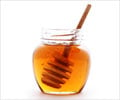
Newton, who joined the IU College of Arts and Sciences' Department of Biology last year, said the research suggests honey bees may take advantage of these beneficial symbiotic bacteria to convert indigestible material into nutritious food and to enhance protection from pathogens.
The research identified, for the first time, important food-processing genera in honey bee colonies: Succinivibrio and Oenococcus were the dominant genera found in the study, and there was 40 percent greater activity of the probiotic genera Bifidobacterium and Paralactobacillus in colonies that were genetically diverse compared to those that were genetically uniform. Genetic diversity is created in a colony when a queen mates with many male bees, an act that is known to improve colony health and productivity.
"We don't yet know what's causing colony collapse disorder, but colonies that succumb to it suffer from a broad range of problems," Newton said of a phenomenon that the U.S. Department of Agriculture says has taken about 34 percent of the overall U.S. honey bee population each year since 2007. "What we observed in our work was that there was less likelihood of potentially pathogenic bacteria showing up in genetically diverse honey bee colonies compared to genetically uniform colonies."
The team was able to sample and then classify over 70,500 genetic sequences for bacterial genera from 10 genetically uniform colonies and 12 genetically diverse colonies by analyzing a specific molecule found in RNA -- a first for examining honey bees and their symbiotic microbes. Their study is the largest of its kind -- the single-largest analysis of newly identified active microbes ever to be identified in honey bees. In addition, they revealed that those microbes were more diverse in genetically diverse colonies (1,105 unique bacterial species) compared to genetically uniform colonies (781 species).
Advertisement










